Dear reader,
My name is Wilton Desmense and I live in The Netherlands. In this article I would like to show how researchers, even from abroad, can benefit from the work of the Canadian Film and Photo Unit. I never had a special interest in World War Two. However it was aroused by the discovery of a document with mysterious abbreviations in the archives of Angrisa, the name of a local historical society in Engelen, a township near ‘s-Hertogenbosch in the south part of the Netherlands. One thing led to another, and so my simple research into the meaning of the document has grown into an extensive study of the Engelen liberation months. As a retired teacher (I am 69 years old) of the ancient Greek and Latin languages, I had plenty of time for it. Finding images also proved challenging. In addition, I came across a computer program, which was very easy to use for coloring black and white photos. Sometimes the results add to the contemporary experience. So do not wonder about the origin of some of the color photos that come with this article.
Every 5th of May, the Netherlands commemorates its liberation from the Germans. This year the 75th Liberation Day could not have the attention it deserves (due to the pandemic). The south part of the country however has already been celebrating its liberation in September, October or November last year. In those post D-Day months, English, Polish and Canadian soldiers drove off the Huns from the land south of the Maas river.
I am living in Engelen, a small village near ‘s-Hertogenbosch and the Maas. Here the Germans had left in the still of the night, and the following day, November 5th, soldiers of the English Highland Division arrived. But the Maas prevented further advancement to the north and remained the front line until the end of the war. This situation was full of danger for the civilian population, so it was decided to evacuate the area along the south bank of the river, leaving just the military to hold the Germans back. From then on several regiments were stationed in these parts, among them from Canada, the Lincoln and Welland, the Lake Superior (Motor), and the 19th Field and the Army Service Corps. Each day and every night patrols would guard the riverbank; from time to time they even crossed the water on reconnaissance missions or to catch a prisoner of war. The Germans did the same and hardly a day passed without shooting and mortar fire back and forth.
Until now little was known about the things going on in Engelen during these months. Recently however a curious document popped up from the local church archives. It most definitely was a military boat timetable between Engelen and the nearby Fort Crèvecoeur situated on the south bank of the Maas, but it contained no further useful information. My curiosity was aroused right away and turned into an extensive investigation into the subject, “The Municipality of Engelen from Liberation to Liberation Day”. Information came forth from various types of sources.
Engelen along with the neighbouring village of Bokhoven was mentioned in books such as the memoirs of Charles D. Kipp (“Because we are Canadians”, ISBN 978-1553651123), military reports and war diaries. One day I was looking through G.F.G. Stanley’s book “In the Face of Danger” (published by The Lake Superior Scottish Regiment in 1960, ISBN B0007JIHZY), when an image caught my attention. In it a sign was visible showing the names of Engelen and Bokhoven. It was a painting by the war artist Bruno Bobak. I wondered if there was more imagery to be found for my purpose. Et voilà, the Bobak war paintings collection was found at the Canadian War Museum (www.warmuseum.ca), and comprised more of Engelen and its surroundings. Following this surprising result I also searched for photos and films. And so I came upon the website of the Canadian Film and Photo Unit and read several news bulletins published by Dale Gervais with interesting information about its activities, cameramen and photographers during World War II. In particular the mention of the online availability on YouTube of the Canadian Army Newsreels and British Pathé footage put me on the track of beautiful material, so far unknown to me and other locals or, as I suspect, experts of that period. Thanks to a happy coincidence – on one particular day, the CFPU website seemed to be not functioning anymore – I made contact with Dale. As a free-lance researcher, and volunteer at Library and Archives Canada, he had recently been scanning some ww2 photo albums of Canadian regiments (Army Numerical). He gave me very useful tips in which albums I might find pictures that could be of interest for me. This way I discovered a great number of photo’s of the former concentration camp Vught transformed in ‘First Canadian Field Punishment Camp and Detention Centre’ (LAC Army Numerical Album No. 94).
There also was the photograph (see below) of a bridge named Sue. Amicably her Canadian creators had called her Sagging Susie. She and the text from the War Diary of the Royal Canadian Engineers (6 Field Park Squadron, 15 November 1944) are a nice couple to use in ending my story, that shows how the help of Dale, and that of Library and Archives Canada in general, benefits investigators researchers like myself:
“Field Stores have one TD 18 and one D4 (Tractor/Bulldozer types) working near SAGGING SUE MR E288443 (Military Region coordinates). The job is the repair of the canal banks where FBE BR (Folding/Floating Bridge Equipment) used to be. This FBE was replaced by SAGGING SUE, a Cl (Class) 9 Bailey. The banks were cut very deeply for this FBE Br. Our Mech Eqpt (Mechanical Equipment) is repairing bank.”

The photo was taken by Lt. Aikman of the CFPU on 17 December 1944. (Army Numerical Album no. 085, LIBRARY & ARCHIVES CANADA) This was the canal the Highland Division crossed 4th November ,1944 in the evening, the day before they reached Engelen, a film of which can be viewed online at film.iwmcollections.org.uk/record/34151.

Cameraman Mike Angelo in action, 1 February 1945. He visited Engelen to film soldiers of The Lake Superior Regiment bringing supplies to the Fort Crèvecoeur. (Army Numerical Album no. 086, LIBRARY & ARCHIVES CANADA) Soldiers of The Lake Superior Regiment transporting supplies to the Fort Crèvecoeur, 11 December 1944. Still from Sgt. Angelo’s film (Canadian Newsreel no. 52).
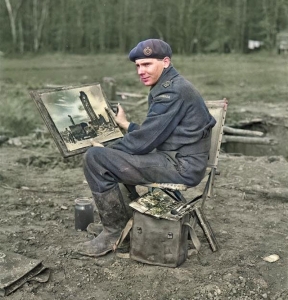
4 February 1944 war artist Bruno Bobak made a little drawing of the demolished church in Nieuwkuijk near Engelen and worked it out a day later. The picture however was taken in Calcar Germany, as became apparent from one of the albums scanned by Dale. Photographer (Lt. B.J. Gloster) and artist staged a play, according to the album on March the 8th. But the final stage of this enquiry was produced by Bobak himself stating in his day by day report, 3 March 1944: “I was visited by Lt B.J. Gloster, the Film & Photo Officer.”
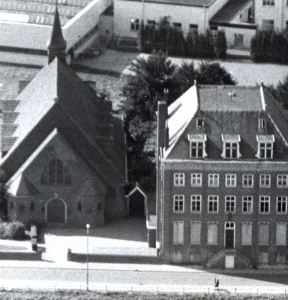
Aerial picture, taken in 1975, showing the part of Engelen, where an Observation Post of the allies was located. From the attic of the high building next to the church they kept an eye on the Jerry activity. Canadian veteran Len van Roon (born 1921) from Charleswood Winnipeg shared this and more experiences of the time spent in Engelen with the local historical society Angrisa.
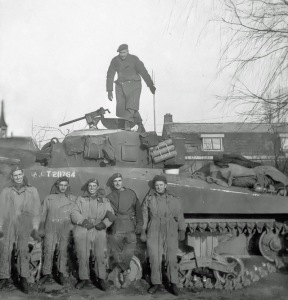

Two pictures taken near the Observation Post of the 19th Field Regiment in Engelen. On account of the continuous threat of gun fire by the Germans the men went there by tank (this one was baptized Calamity Jane). Sitting on top of the tank is Len van Roon.

Aerial picture of Engelen, 2010. Above the river Maas meanders, bottom left side on the bank of the canal is Engelen, many times the size it was in 1945.
© Wilton Desmense 2020








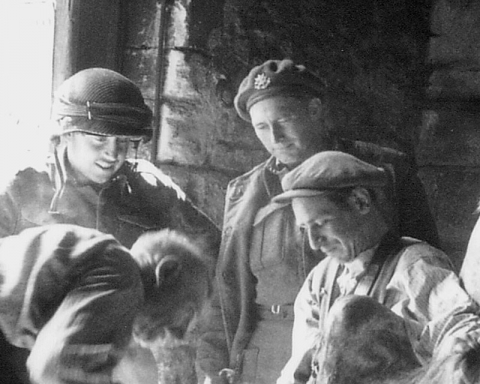


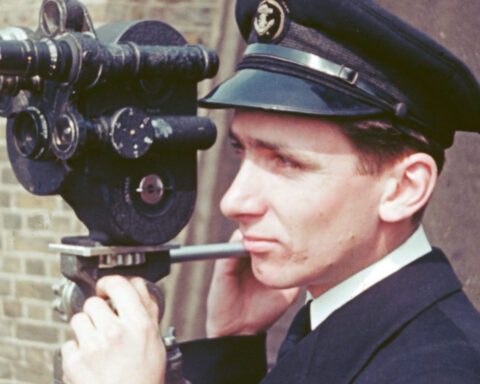

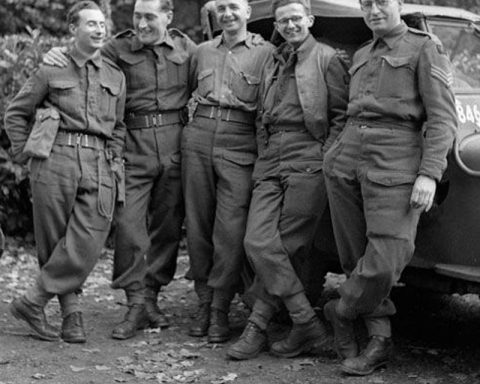


Thank you once again for reaching out and taking the time to share your research Wilton!
Dale : )
Arrived at this post reading the book Wilton (who taught classical languages to two of my daughters) wrote on the last war months of Engelen. So nice he discovered this source!
Hi Rob, thanks so much for sharing!
Leuk berichtje, Rob. Dank je wel voor je reactie. Hartelijke groeten aan Marieke en Chris.
(Nice message, Rob. Thank you for your comment. Warm regards to Marieke and Chris.)
Beste Wilton,
Via Twitter (Rob van Bergen en ik houden ons beiden bezig met beter bouwen) kwam ik op je mooie onderzoek. De pensioentijd wordt welbesteed!
Ik heb het meteen doorgestuurd naar mijn oom Kees van Everdingen, die schrijft verhalen over het iets ten westen van Engelen gelegen Heesbeen (en Heusden) en de rol van zijn vader, mijn opa, in het verzet.
https://www.bhic.nl/ontdekken/verhalen/heesbeen-en-omgeving-in-oorlogstijd-deel-3
met vriendelijke groet,
Nicolaas van Everdingen
p.s. Ik schrijf dit in het Nederlands, je weet je vast nog wel te herinneren dat de talen niet mijn sterkste kant waren op het Stedelijk Gymnasium (7 jaar Latijn is me echter zeker nog voldoende bijgebleven 😉 collega Louis Kuitenbrouwer schreef ooit bij een 1 voor Grieks “Mind the drill, Nicolaas!”)
Hoi Nicolaas, wat een verrassing om je je zo weer eens te ontmoeten. Ik heb al het een en ander onder ogen gehad van de onderzoeken van je oom, ik meen via Fb en Herman Van den Bossche, die eigenlijk van Boxtel heet. Heesbeen en Engelen zijn allebei op of rond 5 november bevrijd. Ik fiets ook regelmatig over de weg van Heusden via Heesbeen naar Doeveren, jouw oude geboortegrond. Hartelijke groeten!
(Hi Nicolaas, what a surprise to meet you this way. I have already seen a few things about your uncle’s investigations, I believe through Fb and Herman Van den Bossche, who is actually called van Boxtel. Heesbeen and Engelen were both liberated on or around November 5. I also regularly cycle on the road from Heusden via Heesbeen to Doeveren, your old birthplace. Cordial greetings!)